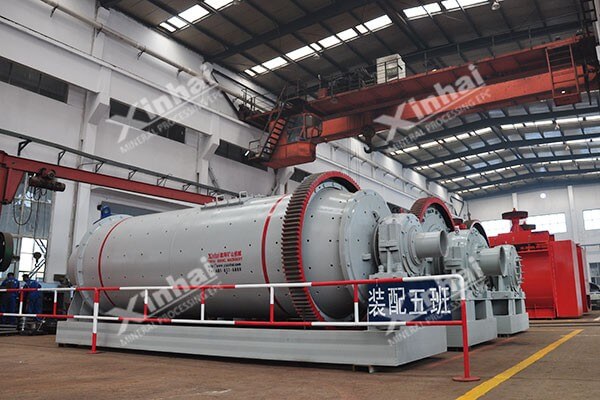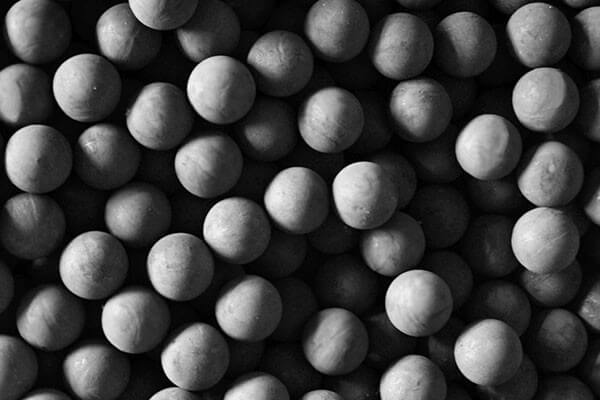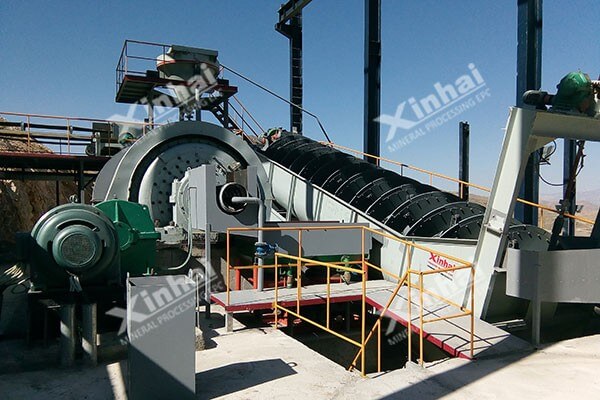

Warm Tip: If you want to know more details about equipment, solutions, etc, please click the button below for free consultation, or leave your requirements!
Are you looking for solution to improve the grinding effencicy of your ball mill? Are you faced with the problem like low grinding efficiency, low processing capacity, high energy consumption, unstable product fineness of the ball mill?
You are in the right place.
Here are the 10 ways for your to improve the ball mill performance:
Step#1. Change the original grindability
Step#2. More crushing and less grinding to reduce the feed size into mill
Step#3. Reasonable filling rate of steel ball
Step#4. Reasonable size and proportion of steel ball
Step#5. Refill steel ball accurately
Step#6. Appropriate grinding density
Step#7. Optimize the grinding process
Step#8. Improve the classifying efficiency
Step#9. Appropriately promote sand-returning ratio
Step#10. Auto-control of the grinding system
Let's get started.

The complexity of grindability is determined by ore hardness, toughness, dissociation and structural defects. Small grindability, the ore is easier to grind, the wear of lining plate and steel ball is lower, and the energy consumption is also lower. Therefore, the property of raw ore directly affects the productivity of the ball mill.
If the ore is difficult to grind, new processing technology can be adopted to change the grindability if the economic and site conditions allow:
Add some chemical reagent to change the grinding effect and promote the grinding efficiency during the grinding stage;
Change the grindability of the raw ore, such as heating the minerals, change the mechanical properties of the ore, reduce the hardness of the ore.
The larger feed size, the more work that the ball mill needs to do on the ore. To achieve the specified grinding fineness, the workload of ball mill will be increased inevitably, and then, the energy consumption and power consumption will be increased accordingly.
In order to reduce the feed size of ore, the particle size of crushing product must be small, that is, "more crushing and less grinding". Moreover,the efficiency of crusher is obviously higher than that of ball mill, and the energy consumption of crushing is low, which is about 12%~25% of the grinding.
In the case of a certain milling speed, larger filling rate, bigger grinding area, and stronger grinding effect. However, the power consumption is also large, and it is easy to change the motion state of the steel ball if the filling rate is too high, then the impact effect on large particle materials is reduced. Conversely,the smaller filling rate, the weaker grinding effect.
For many mineral processing plants, the filling rate is generally at 45%~50%. But the condition of mineral processing plants is different, just copying others' filling rate cannot obtain the ideal grinding effect. The specific value should be decided by the mineral processing test.
Since the contact between steel ball in the ball mill and ore is point-to-point. If the diameter of steel ball is too large, the crushing force is also large, so the ore is crushed along the direction of the penetrating force, not the interface among different minerals. This crushing is not an option, which doesn’t meet the purpose of grinding.
In addition, in the case of the same filling rate, too large diameter of the steel ball results in less steel balls, low crushing probability, serious over-crushing phenomenon and uneven product particle size.
But if the steel ball is too small, the crushing force on the ore is small, and the grinding efficiency is low according. Therefore, it is very important for grinding efficiency to adopting accurate size of the steel ball and its proportion.

Obviously,the grinding action between steel ball and ore causes the wear of steel balls, which can change the proportion of steel balls, affect the grinding process and cause the fineness change of grinding products. Therefore, only by adopting reasonable steel ball supplementation system can the ball mill keep stable operation.
The grinding density mainly affects the proportion of pulp, the adhesion degree of the ore particles around the steel ball and the fluidity of pulp.
Low grinding density, fast pulp flow, the material is not easy to stick around the steel ball, so the impact and grinding effect of steel ball on materials is weak, the particle size of ore discharging is unqualified, and the ideal grinding efficiency cannot be achieved;
High grinding density, the material is easy to stick around the steel ball, so the impact and grinding effect of steel ball on materials is good, but the pulp flows slow, which is not conducive to improve the processing capacity of the ball mill.
There are some measures taken to control the grinding density. For example, control the ore feed of the ball mill, control the water supply of the ball mill, adjust the classifying effect, and control the particle size composition and moisture of the sand return.
In actual production, the grinding process can be optimized according to the ore properties, such as the disseminated grain size of useful minerals, monomer dissociation degree, the disseminated grain size of gangue minerals.
For example, adopting pre-discarding tailings, pre-enrichment, stage grinding, pre-classification to optimize the grinding process, which not only reduces the amount of grinding, but also recovers the useful minerals as soon as possible.
Classifying efficiency plays an important role in grinding efficiency. High classifying efficiency means that those qualified grains can be discharged timely and efficiently, while low classifying efficiency means that most qualified grains are not discharged and sent to the ball mill for re-grinding, which is easy to cause over-grinding and thus affecting the separating effect.
In addition, using two-stage classifying or improving classifying equipment can also improve the classifying efficiency.

Sand-returning ratio is the ratio between the amount of sand return of ball mill and the feeding capacity of raw ore, which can directly affect the productivity of the ball mill. One way to improve the sand-returning ratio is to increase the feeding capacity of raw ore, another way is to reduce the shaft height of the spiral classifier.
But there is also a limited value in the improvement of sand-returning ratio. When it is increased to a certain value, the increase amplitude of the productivity is very small,the total feeding capacity of the ball mill is very close to the maximum processing capacity of the ball mill, that may cause overage grind, so the sand-returning ratio should not be too large.
There are many variable parameters during the grinding operation, and one change will inevitably lead to the change of many factors one after another. Generally, the manual operation control may cause unstable production, while the automatic control can keep the grinding and classifying in a stable and suitable state, thus improving the grinding efficiency.
According to foreign reports, the automatic control of the grinding and classifying system can increase the production capacity by 2.5%~10%, and 0.4-1.4 kwh /t power can be saved per ton of ore.
There are many factors affect the grinding efficiency of ball mill. Many factors can be judged as qualitative analysis, which are difficult to make quantitative analysis. Therefore, the ball mill operator must do a comprehensive analysis according to the actual production situation and the result of the qualitative analysis, thus drawing the reasonable parameters to decrease the production cost, saving energy and reduce the consumption.
13 Common Problems and Solutions in Ball Mill Operation
 0
0
 2906
2906
2What Factors Will Influence Ball Mill Grinding Efficiency?
 0
0
 3604
3604
3Don't Throw the Steel Ball into the Ball Mill Casually!
 8
8
 3641
3641
